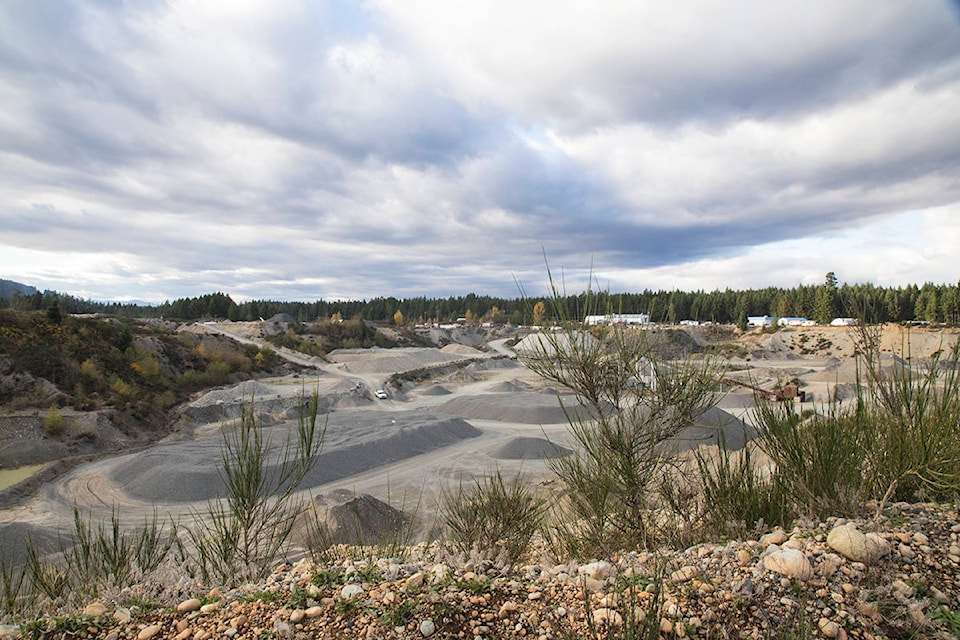A decision from the province is expected soon in regards to the controversial Upland Excavating landfill proposal on the Gold River Highway.
Representatives of the provincial Ministry of Environment and Climate Change (ENV) were in Campbell River council chambers this week to outline the processes and criteria used in decision making when presented with a landfill application and to update the city on where Upland’s proposal is in the process.
AJ Downie of the ENV told council this process has involved a lot of back-and-forth over the many years the proposal has been before the government, and another draft operational certificate (OC) is close to being presented to the company for consideration. OCs are issued to businesses wishing to run a landfill and outline “the detailed operating requirements for protection of the environment,” Downie says.
Upland’s existing landfill facility received its current operating permit in 1992, “and there are aspects of it that definitely not up to what we would consider to be modern-day landfill design requirements,” Downie says. When Comox Strathcona Regional Waste Management redeveloped its Management Plan – approved by the province in 2013 – it acknowledged the existing private landfills, like Upland’s, that didn’t conform with current landfill requirements and would need to either be brought up to current standards or phase out operations.
Upland created an action plan that would see them upgrade the facility, which is why their proposal has been under review.
The major concern from many within the community, however – including city council – is not just that Upland would like to continue to operate, but that they would like to expand the size and scope of their intake from their currently-allowed 3,200 cubic metres per year to 45,000 cubic metres per year and allow them to accept contaminated soil.
Downie says while he was not presenting to advocate for the project, he would say that Upland has committed to – and completed – every study, assessment and step asked of them throughout the lengthy process – increasing and enhancing the level of protections they would commit to numerous times along the way, “to the point where they would not only meet provincial requirements, but exceed ministry requirements.”
But the site is still set to be located in close proximity to the watershed from which our community gets its drinking water.
“That has been the most common concern raised through the stakeholder and agency consultation processes,” Downie says, “and it’s certainly of the utmost interest and concern to the Ministry of Environment when evaluating this application,” but another important aspect of the review has to do with the fact that the Quinsam River Fish Hatchery is also downstream from the proposed facility.
“It’s safe to say a lot of the issues relate to groundwater and what direction the groundwater is flowing in, at what kind of rates, and there have been a number of studies done on a very site-specific basis to make sure we understand exactly where the watershed boundary is for the groundwater and the characteristics of the water in the aquifer beneath the proposed landfill location,” Downie says.
There have been numerous qualified professionals reviewing proposals and studies conducted throughout the process, from all sides of the issue, including a hydrogeologist hired by the Campbell River Environmental Committee (CREC), which has been a vocal opponent to the project throughout the entire process.
RELATED: City outlines concerns about landfill
RELATED: CREC holds information session on threat to Campbell River drinking water
“I think it’s fairly safe to say we’re getting to the point where the ministry’s qualified professional has a fairly good understanding of what the issues are and how they’re prepared to be addressed though the operational certificate. We’ve prepared a second draft operational certificate and that is out for final review and comments by Upland.”
That certificate, Downie says, is 18 pages of “fairly detailed technical requirements,” including for the facility to be double-lined, have a leak detection system between those liners, a leachate collection and management system, and see the relocation of all of the waste at the current site to the new double-lined site.
“The review process is ongoing, but we do expect that the statutory decision maker on this file is getting close to probably being in a position to provide notice of a pending decision,” Downie says. “If that happens, we would be posting materials to our website and inviting further input, feedback and comment from the public and stakeholders for a minimum of 30 days prior to a decision actually being made.”
Council will be given much more information about the project at their next public meeting, as they have invited Dr. Gilles Wendling – the hydrogeologist hired by CREC – as well as representatives from Upland Excavating to present to council at the Jan. 28 meeting, scheduled for 6:30 p.m. in council chambers.
